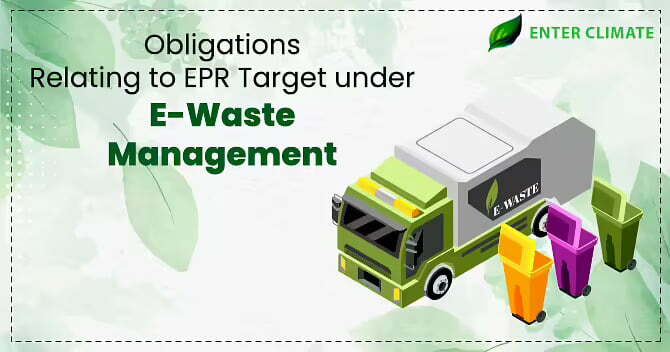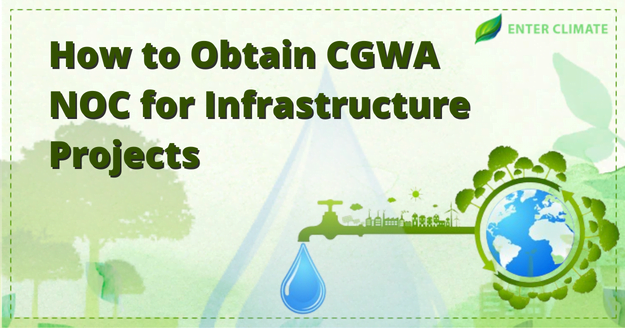Obligations Relating to EPR Target under E-Waste Management Rules
 13 Aug, 2022
13 Aug, 2022 
EEE (Electric or Electronic Equipment) have become an essential part of everyone’s life, especially with the spread of the pandemic. But this development and influx of products in the market, the amount of E-Waste is also increasing day by day, with India being among the top 5 countries in terms of E-Waste generation. We discuss EPR Target.
This increase in E-Waste has resulted in authorities taking stringent actions and formulating new policies, including the implementation of Extended Producers’ Responsibility and the setting up of the EPR Target by the State Pollution Control Board/Pollution Control Committee, which was further redefined in the latest amendment of Plastic Waste (Management) Rules.
E-Waste generation in India
As estimated by the government authorities, in 2021, the generation of E-Waste has seen a hike of 31% per year. Further, the Central Pollution Control Board have calculated the waste generation from Electrical and Electronic Equipment is higher than plastic waste, with an estimate of 7.71 lakh tonnes in 2018-2019 and 10.14 lakh tonnes in 2019-2020.
EPR Action Plan under E-Waste Management Rules
Extended Producers’ Responsibility as a policy was introduced in the legislature during the 1990s to address the issue of end-of-life of products by utilising a target-oriented approach as an alternative to command and control type regulation. The Extended Producers’ Responsibility plan in E-Waste management refers to an application plan where the producer affirms their overall scheme for completing the EPR targets and discloses the method for accumulation and transportation of E-Waste.
EPR plan format framed as per implementation guidelines provided by Central Pollution Control Board brings regularity as well as clarity to businesses. EPR plan act as a supporting document submitted while filing the document.
Preparing the Action Plan: The action plan document defines the outline of how a manufacturer/Producers want to handle their Extended Producers’ Responsibility as well as how they plan to implement and monitor the production process. After registration, manufacturers are expected to fulfil their action plan to fulfil EPR. The government has also laid down the implementation guidelines, which are available on Central Pollution Control Board’s official site.
Authorisation of Action Plan: Companies with manufacturing units in one or two states must approach respective state authorities to get the action plan adequate and submit it to the State Pollution Control Board. A company having manufacturing units in more than two states has a simple process for approval and submission, which happens at the Central Pollution Control Board.
EPR Target for Extended Producers’ Responsibility
Target-based method for implementation of Extended Producers’ Responsibility has been implemented in the E-Waste (Management) Rules which mandates stage-wise collection target to producers for the gathering of e-waste, either in number or weight, which shall be 30 per cent of the estimated quantity of E-waste produced during first two years of enactment of rules followed by 40 per cent during third and fourth years, 50 per cent during fifth and sixth years and 70 per cent during seventh year onwards.
The collection target of E-Waste is based on the estimated generation calculated for each Electrical and Electronic code for a particular financial year. The E-Waste generated is calculated as
E-Waste produced whether in weight or number in that particular financial year “x-y”= Sales in the Financial year “(x-z)-(y-z)” was, ‘x-y’=Financial year in which generation is an estimated and z=average service life of Electrical and Electronic Equipment.
For the FY 2016–2017 and 2017–2018, respectively, the collection targets for e-waste were set at 15% and 30% of the expected e-waste creation, respectively. These goals would rise to 40 per cent for the following two fiscal years, from 2018 to 2020, 50 per cent for the following two fiscal years, from 2020 to 2022, and 70 per cent for the following two fiscal years, from 2022 to 2023.
As per the latest amendment of the E-Waste (Management) Rules, 2016, the EPR target is to be set by authorities which are the State Pollution Control Board/Pollution Control Committee. Extended Producers’ Responsibility Action Plan to meet the state-wide EPR target has to be deferred to each of the states/UT in which the Producers’/Importers/Brand Owners are introducing the plastic into the market. The Steering Committee (SC) is constituted under E-Waste (Management) Rules and headed by the Chairman of The Central Pollution Control Board[1]. While managing the implementation of the rules, they also have the power to impose fines on companies if their EPR Target is not met even after three years. The companies that meet their target with a year’s delay will be reimbursed 85% of their fine after two years, 60% and 30% after the second and third years, respectively.
The Extended Producers’ Responsibility rule under the E-Waste (Management) 2016 delegates the responsibility to the state authority/government to monitor the activities of the Producers’/Importers/Brand Owners and recyclers to ensure the compliance with the standards and fulfilment of EPR targets specified by the Rules.
Process of filing for EPR Action Plan
The process of filing the Extended Producers’ Responsibility Plan includes assembling the information on the generation of their end-of-life products, outlining a scheme for channelisation and collection of their end-of-life products, estimated budget for implementing EPR, and a declaration on ROHS compliance, and design of the scheme of creating awareness.
The producers submit the EPR Plan along with the application for EPR authorisation in Form 1 of the E-Waste (Management) Rules, 2016, which is addressed to the member secretary of The Central Pollution Control Board. Form 1 must contain all the relevant information relating to the collection and transportation of their products. The Rules also give liberty to Producers’ to revisit and amend the Extended Producers’ Responsibility plan from time to time with the knowledge of the Central Pollution Control Board. In this case, Extended Producers’ Responsibility authorisation will also need amendments.
Conclusion
India implementing Extended Producers’ Responsibility for E-Waste and Plastic waste has delegated the responsibility to the PIBOs (Producers’/Importers/Brand Owners) for sustainable disposal and management of waste which complying with the EPR target set up by the State Pollution Control Board is mandatory.
Categories
Latest Post
Air pollution Dispersion Modeling
Natural Disaster Risk Assessment
Endangered Species Protection
Aquifer Recharge Project
Sustainable Sanitation Solutions














